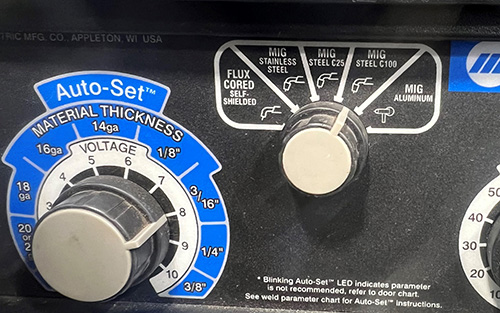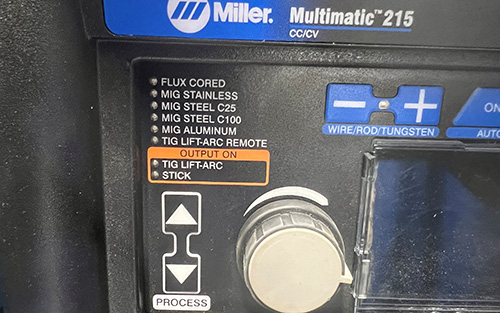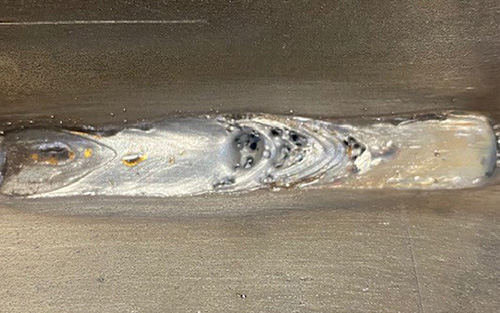Best MIG welding gas
Do you have questions about choosing the right welding gas for your DIY welding projects? Whether you’re MIG welding mild steel, aluminum or stainless, choosing the right shielding gas for the base material is an important first step in getting good results.
Learn more about shielding gas options for MIG welding and get tips for proper setup and troubleshooting common issues.
What is the purpose of shielding gas for MIG welding?
Welding produces a molten puddle made up of the base metal and filler metal being fused together. Shielding gas protects that puddle from atmospheric contaminants like nitrogen and hydrogen.
Without shielding gas, the finished weld would be very weak and peppered with pinpoint holes once it solidifies — a defect known as porosity. Shielding gas acts as a blanket over the molten weld puddle, keeping atmospheric contaminants out.
The type of gas used also has an effect on the characteristics of the weld. Your gas choice can impact spatter levels, arc stability and arc performance along with many other factors.
In addition, the desired welding transfer you want to achieve is dependent on the type of shielding gas you’re using. So if you want to do a spray transfer, globular transfer or short-circuit transfer, you need to select a certain type of shielding gas for each transfer mode in MIG welding. For example, a shielding gas that is high in argon makes it difficult to achieve short-circuit transfer mode but easier to achieve spray transfer.
Common shielding gases for MIG welding
Hobbyist welders most commonly use three types of filler metals to match the base material they are welding: solid steel wire to weld mild steel, aluminum wire to weld aluminum and stainless steel wire for stainless. The shielding gas options vary based on the material being welded.
Welding gas for mild steel
A 75% argon/25% carbon dioxide mix (sometimes referred to as “C25 gas”) is very common for welding mild steel. It produces minimal spatter and provides good arc characteristics. It also has a good bead profile, allowing it to wash out well at the toes of the weld. One drawback: this mix is more expensive than other options.
Another gas used for mild steel is 100% carbon dioxide, sometimes called C100. It’s a good alternative that is less expensive than a 75%/25% shielding gas mixture, but it can produce a bit more spatter and result in a slightly erratic arc. However, as technology in welding power sources designed for DIY users improves, the machines provide better performance with a 100% CO2 gas than the machines of 10 or 15 years ago.
While it’s less common for the DIY user, if you’re going to get into a spray transfer mode with MIG welding (such as when you’re welding a thicker plate), a 90% argon/10% CO2 gas, or C10 gas, is a good option for that.
 |
| The front panel of the Millermatic® 211 MIG welder where operators can choose a MIG process for C25 and C100 gases. |
 |
| The front panel of the Multimatic® 215 multiprocess welder where operators can choose a MIG process for C25 and C100 gases. |
Welding gas for aluminum
The most common gas used for MIG welding aluminum is 100% argon. This gas allows you to get into a spray transfer or pulsed spray transfer mode easily for aluminum due to its low ionization value.
Another benefit of 100% argon gas is that it can also be used for TIG welding aluminum. So if you MIG weld aluminum and also TIG weld in your shop, this is a handy gas to have on hand because it covers both processes.
While there are many helium/argon gas blends that work for aluminum, these gases aren’t a good option for most DIY welders because of the very high cost of helium. Also, aluminum is highly sensitive to contamination, so avoid using a gas with CO2, which can introduce carbon into the weld.
Welding gas for stainless steel
There are many gas combinations available for MIG welding stainless steel. Many MIG welding power sources have traditionally been designed for short-circuit transfer mode to be used with a helium trimix shielding gas for stainless. Helium helps the puddle wash out without adding too much inductance, providing a good bead profile and good bead characteristics. But as mentioned above, the cost of helium today can be prohibitive for DIY welders.
In recent years there has been a shift as manufacturers design MIG welding power sources to be used with different gas combinations for welding stainless steel.
A 98% argon/2% CO2 blend is a good option for stainless. Just as with aluminum, it’s important to avoid introducing too much CO2 into the mix with stainless as it can cause porosity or other weld defects. An argon/CO2 gas mixture is a versatile option. It can be used for short-circuit transfer, spray transfer and pulsed spray transfer modes. It still provides a good bead profile with decent wetting characteristics and is much more affordable than a helium gas mix.
Welding gas for silicon bronze
Using a silicon bronze filler metal to join dissimilar metals or a variety of coated materials is becoming increasingly common with DIY welders for applications such as automotive repair and for art and sculptural welding. Using an ERCuSI-A silicon bronze filler metal results in what is essentially a MIG brazing process.
Typically, you want to use a 100% argon shielding gas. This allows for a nice short-circuit transfer that helps the puddle wash out when using silicon bronze filler metal.
Shielding gas best practices
While choosing the right shielding gas is an important step, follow these best practices to produce better results.
Tip 1: Ensure proper setup and flow rate
Before you hook up the shielding gas, twist open the valve on top of the canister to let a small amount of gas out and then close the valve again. This cleans out the connection, so when you attach the regulator there are no contaminants like dust that can get into the welding system. Then, make sure you attach the regulator as instructed in the owner’s manual. Typically, a regulator has two dials. The right one will control the gas cylinder and the left one will control the gas flow rate.
The welding process used determines the proper flow rate. For MIG short-circuit welding it’s recommended to use a 25 to 35 cubic feet per hour (cfh) gas flow rate. TIG welding typically runs a lower flow rate, while MIG processes using other transfer modes (other than short-circuit transfer) can run slightly higher than 35 cfh.
A flow rate that is too low will introduce porosity into the weld because there isn’t enough coverage to protect the puddle. A flow rate that is too high wastes gas and can also produce an Eddy current that results in turbulence, introducing atmospheric contaminants into the weld that cause porosity.
Anytime you’re welding outdoors with a gas-shielded process, try to set up a wind block or tent to prevent the wind from blowing the gas away.
 |
| An example of porosity in a weld. |
Tip 2: Check all connections
If you experience issues with gas coverage, the first troubleshooting step is to check all of your connections on the back of your power source. On many multiprocess welding power sources, there are two different gas ports — one for TIG and one for MIG. Be sure you are connected to the right port. Then check that your cfh is set properly.
If you’re still not getting shielding gas after taking these steps, check that the MIG gun is seated properly in the drive system. Without proper seating, the gas exits at the drive system rather than making its way through the end of the MIG gun.
Consider using an external flow meter on the MIG gun. This will monitor the cfh rate you’re getting at the end of the gun.
Tip 3: Clean the consumables
The consumables in your MIG gun include the contact tip, diffuser and nozzle. The nozzle directs the shielding gas to cover the weld puddle. However, as you weld spatter and debris can clog the nozzle. If there is too much spatter buildup, it can disrupt the shielding gas coverage.
Be sure to occasionally remove the nozzle and use pliers or another tool to remove any excess buildup.
Tip 4: Adjust contact-tip-to-work distance (CTWD)
Another troubleshooting tip to try if you’re running into shielding gas issues is to adjust your CTWD.
If you’re welding too far away from the work surface, you might be losing shielding gas before it gets to the weld puddle. Try moving the end of the gun closer to the base material. While it depends on several factors, 1/4 inch to 5/8 inch is a standard recommended CTWD.
Shielding gas tips for MIG welding
Selecting the right shielding gas for your MIG welding project can help you achieve the best results and reduce issues that can cause poor weld quality. Be sure to always follow the filler metal manufacturer’s recommendations for the type and amounts of shielding gas that should be used for a given wire and base material.